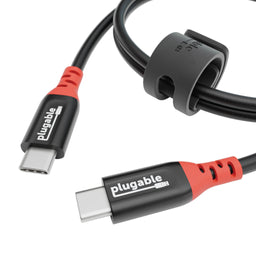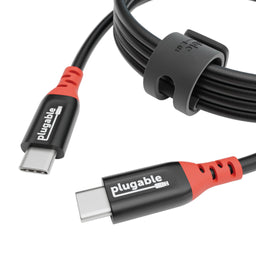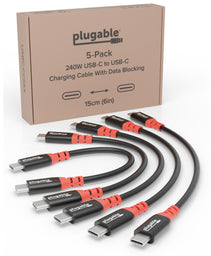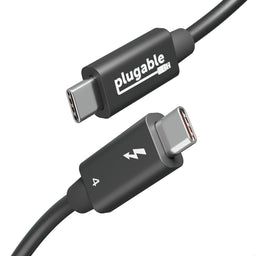















Hassle free, 2-Year Warranty
Fast, Free Shipping on Orders $35+
Lifetime Technical Support
30-Day Money Back Guarantee
Plugable USB-C Cable, Data Blocker Charge Only, 240W (3.3 ft / 1m)
$14.95 USD
SKU: USBC-CC1MAmazon Rating : (26 Reviews)
Features
- Get Charged Up— Meet Plugable’s 1m (3.3ft) 240W USB-C to USB-C cable designed exclusively for charging. With no data lines for safer use in public spaces and protection against juice jacking. Delivers clean, reliable power to laptops, tablets, and phones. Includes a cable tag so you always know the specs, plus a strap for easy cable management
- Extended Power Range to 240W— This USB C cable fast charging supports up to 240W power (48V/5A), ideal for gaming laptops, pro workstations, and large tablets. The cable communicates with your device to ensure safe, consistent, and efficient charging
- Safer by Design— Standard USB-C cables carry data. This true USB C charging cable only physically carries power. That means real protection in airports, cafes, schools, and any public charging port. No adapters needed, just direct, secure charging
- Universal USB-C Charging— Works with any device that supports USB Power Delivery up to 240W, including MacBook Pro/Air, Dell XPS, Lenovo ThinkPad, iPad Pro, and Samsung Galaxy. This USBC to USBC design fits USB-C chargers, hubs, docks, and other PD-compliant gear
- Lifetime Support— This USB C fast charging cable has been designed with reliability at its core and was built to meet the deployment demands of IT departments and the ease of use necessary for home offices. Includes lifetime support from our North American team of connectivity experts











